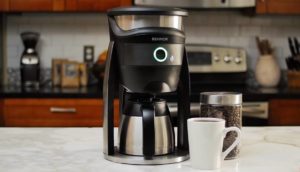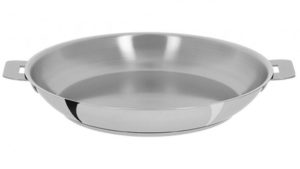The kitchen is a central hub of activity in any home, where meals are prepared, family gatherings take place, and memories are made. However, it is also an area where accidents can occur, especially when proper safety precautions are not followed.
Ensuring kitchen safety is essential for the well-being of everyone in the household.
Among the various potential hazards in the kitchen, there are specific items that pose a significant risk when located near the stove. In this blog, we will shine a light on three crucial kitchen items that should be kept clear of the stove to enhance safety.
By understanding the potential dangers associated with these items and adopting preventive measures, we can minimize the risk of accidents and maintain a safe cooking environment.
Item 1: Paper Products
Paper products, such as paper towels, napkins, and newspapers, are highly flammable materials. Placing them near the stove increases the risk of accidental ignition, especially when exposed to heat or open flames.
Potential Hazards With Paper Towels, Napkins, and Newspapers
If these items come into contact with a hot burner or a nearby flame, they can quickly catch fire and lead to a dangerous situation. Burning paper can release sparks or embers, potentially causing burns or igniting other nearby flammable materials.
Safe Alternatives and Storage Suggestions
Instead of keeping paper products near the stove, it is advisable to store them in a designated area away from heat sources. Consider using non-flammable alternatives, such as cloth towels or microfiber cloths, which are safer and more reusable.
By keeping paper products clear of the stove and opting for safer alternatives, the risk of accidental fires and injuries can be significantly reduced.
Item 2: Flammable Liquids
It is crucial to be aware of the presence of flammable liquids in the kitchen, as they can pose a significant fire hazard. Flammable liquids are substances that have a low flashpoint and can ignite easily when exposed to heat or an open flame.
Examples of Common Flammable Liquids Near the Stove
Some common flammable liquids found in kitchens include cooking oils, vinegar, alcohol-based extracts, and aerosol cooking sprays. These liquids are often used during food preparation and can inadvertently be placed near the stove for convenience.
Proper Storage and Handling of Flammable Liquids
To ensure kitchen safety, it is important to store flammable liquids in designated cabinets or areas away from the stove. Use tightly sealed containers specifically designed for storing flammable liquids to minimize the risk of leaks or spills.
Avoid placing flammable liquids near heat sources or open flames, as even a small spark can cause them to ignite. When handling flammable liquids, exercise caution and follow the manufacturer’s instructions and safety guidelines.
By maintaining awareness of flammable liquids in the kitchen, storing them properly, and handling them with care, the risk of accidental fires can be significantly reduced.
Item 3: Wooden Utensils and Cutting Boards
Wooden utensils and cutting boards are susceptible to catching fire when exposed to high heat. The heat from the stove, especially if it is left unattended or set to a high temperature, can cause wooden items to ignite.
Potential Dangers of Wooden Utensils and Cutting Boards Near the Stove
When wooden utensils or cutting boards catch fire, they can quickly escalate into a larger fire, putting both the kitchen and occupants at risk.
Additionally, burning wooden items release toxic smoke and can lead to the spread of fire to other nearby objects or surfaces.
Safer Alternatives and Best Practices for Storing Wooden Items
In order to minimize the risk of fire, it is advisable to keep wooden utensils and cutting boards away from direct heat sources, such as the stove. Consider using heat-resistant utensils made of materials like silicone, stainless steel, or heat-resistant plastics as safer alternatives.
Store wooden items in a designated area, preferably at a safe distance from the stove, to reduce the likelihood of accidental exposure to heat. Regularly inspect wooden utensils and cutting boards for signs of wear, such as cracks or splinters, and replace them as needed to maintain safety.
By being mindful of the fire risk associated with wooden utensils and cutting boards near the stove, using safer alternatives, and properly storing these items, the potential for kitchen fires can be significantly reduced.
Safety Tips for a Secure Kitchen
General Safety Tips For the Kitchen
- Always supervise the stove when it is in use and never leave it unattended.
- Keep a fire extinguisher within reach in case of emergencies and ensure that everyone in the household knows how to use it.
- Install smoke detectors in the kitchen and regularly test their functionality.
- Avoid wearing loose clothing that can easily catch fire while cooking.
- Keep flammable items, such as oven mitts, pot holders, and dish towels, away from heat sources.
- Use caution when handling sharp objects and hot cookware to prevent injuries.
- If you can’t handle the fire, then cook without it by using items such as the Hibachi electric grill.
Importance of Regular Maintenance and Cleaning
- Regularly inspect and maintain kitchen appliances, including the stove, to ensure they are in proper working condition.
- Clean the stove and surrounding areas regularly to remove grease and food debris, which can pose fire hazards.
- Check and clean the exhaust hood and filters to prevent the buildup of grease, which can reduce ventilation effectiveness and increase the risk of fires.
Raising Awareness About Potential Hazards and Prevention Measures
- Educate family members about the potential hazards in the kitchen, including the items that should be kept clear of the stove.
- Teach children about kitchen safety and the importance of staying away from the stove and hot surfaces.
- Encourage everyone in the household to report any potential safety concerns or malfunctions in kitchen appliances promptly.
- Regularly review and update safety protocols to ensure everyone is aware of the best practices for a secure kitchen environment.
By following these general safety tips, conducting regular maintenance and cleaning, and raising awareness about potential hazards, you can create a safer and more secure kitchen environment for you and your family.
Kitchen Safety Always Comes First
Prioritizing safety in the kitchen is essential for a healthy and secure home. By keeping items like paper products, flammable liquids, and wooden utensils away from the stove, we can minimize the risk of accidents and create a safer cooking space.
By implementing safety practices and maintaining awareness of potential hazards, we can enjoy the pleasures of cooking while ensuring the well-being of ourselves and our loved ones. Remember, safety always comes first in the kitchen.


